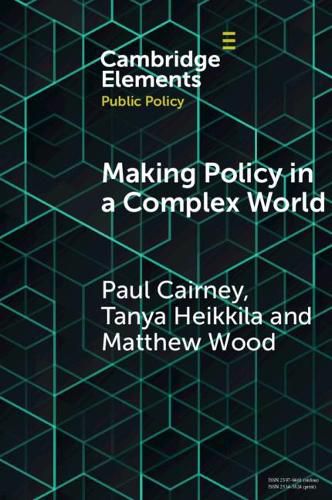Readings Newsletter
Become a Readings Member to make your shopping experience even easier.
Sign in or sign up for free!
You’re not far away from qualifying for FREE standard shipping within Australia
You’ve qualified for FREE standard shipping within Australia
The cart is loading…






This provocative Element is on the ‘state of the art’ of theories that highlight policymaking complexity. It explains complexity in a way that is simple enough to understand and use. The primary audience is policy scholars seeking a single authoritative guide to studies of ‘multi-centric policymaking’. It synthesises this literature to build a research agenda on the following questions: 1. How can we best explain the ways in which many policymaking ‘centres’ interact to produce policy? 2. How should we research multi-centric policymaking? 3. How can we hold policymakers to account in a multi-centric system? 4. How can people engage effectively to influence policy in a multi-centric system? However, by focusing on simple exposition and limiting jargon, Paul Cairney, Tanya Heikkila, Matthew Wood also speak to a far wider audience of practitioners, students, and new researchers seeking a straightforward introduction to policy theory and its practical lessons.
$9.00 standard shipping within Australia
FREE standard shipping within Australia for orders over $100.00
Express & International shipping calculated at checkout
This provocative Element is on the ‘state of the art’ of theories that highlight policymaking complexity. It explains complexity in a way that is simple enough to understand and use. The primary audience is policy scholars seeking a single authoritative guide to studies of ‘multi-centric policymaking’. It synthesises this literature to build a research agenda on the following questions: 1. How can we best explain the ways in which many policymaking ‘centres’ interact to produce policy? 2. How should we research multi-centric policymaking? 3. How can we hold policymakers to account in a multi-centric system? 4. How can people engage effectively to influence policy in a multi-centric system? However, by focusing on simple exposition and limiting jargon, Paul Cairney, Tanya Heikkila, Matthew Wood also speak to a far wider audience of practitioners, students, and new researchers seeking a straightforward introduction to policy theory and its practical lessons.